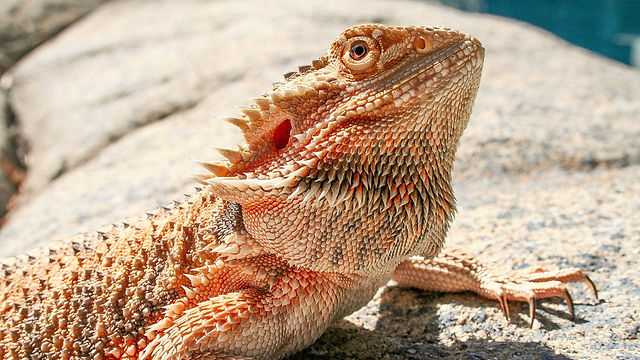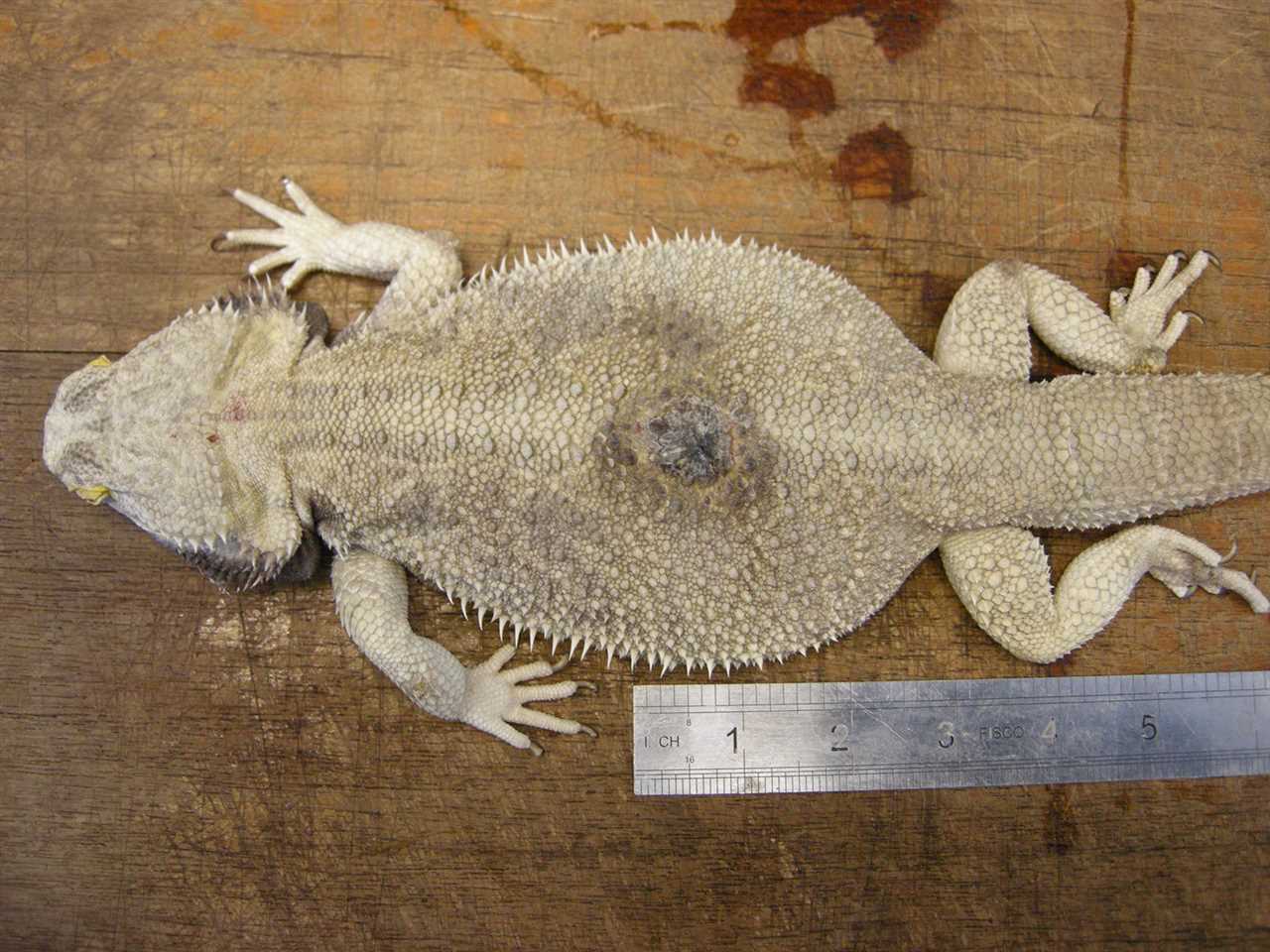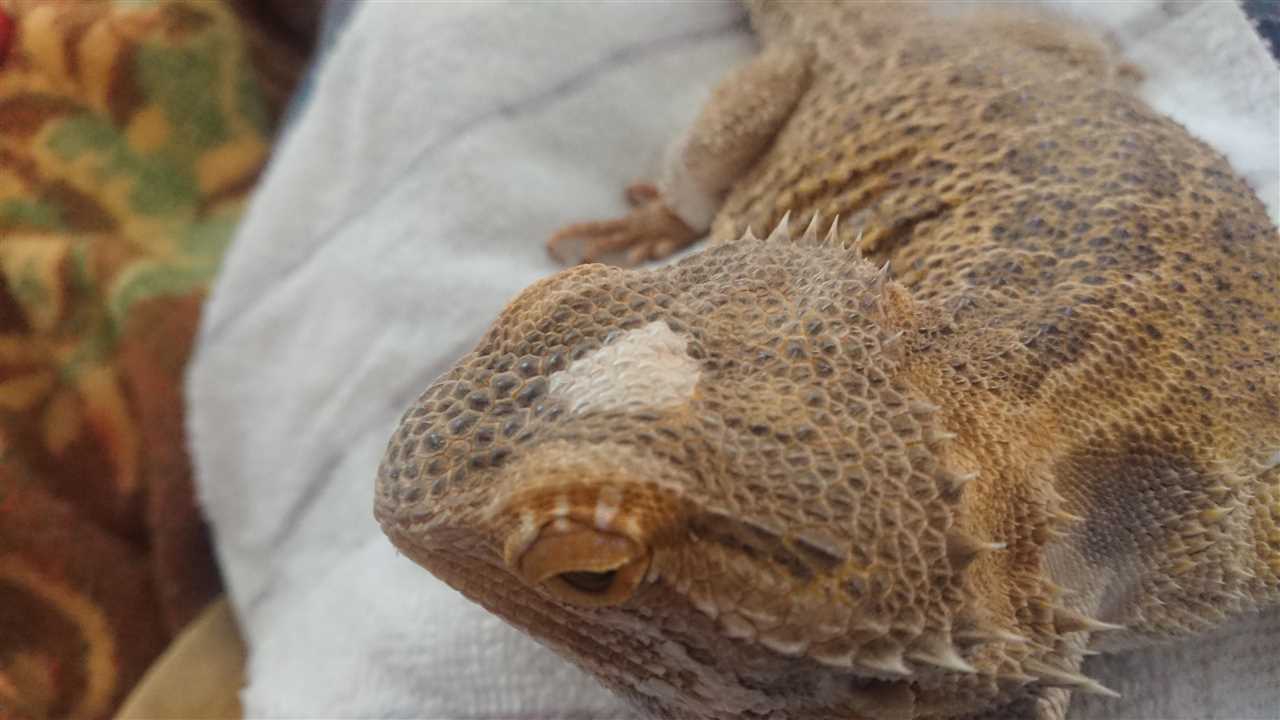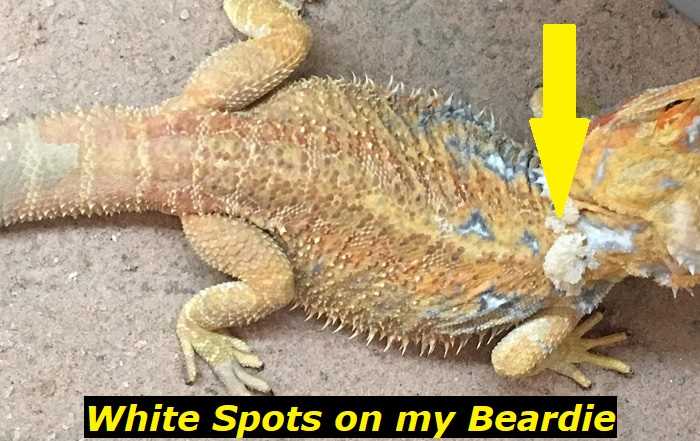
If you own a bearded dragon, you know how important it is to keep them happy and healthy. One common health issue that can affect bearded dragons is the presence of white fungus. This fungal infection can be a serious problem if left untreated, but with the right care and attention, it can be prevented and treated effectively.
White fungus on bearded dragons typically appears as white patches or spots on the skin, scales, or mouth. It can also affect the eyes and cause respiratory problems. This fungus thrives in warm and humid environments, so ensuring proper husbandry practices is crucial in preventing its occurrence.
To treat white fungus on bearded dragons, it is essential to consult with a reptile veterinarian who specializes in exotic pets. They will be able to diagnose the condition and suggest the most appropriate treatment plan. Common treatments include antifungal medications, topical creams, and changes in the dragon’s habitat.
Preventing white fungus involves maintaining a clean and hygienic environment for your bearded dragon. Regularly clean and disinfect their enclosure, provide adequate ventilation, and keep humidity levels in check. Additionally, avoid overcrowding their habitat and provide them with a proper diet, rich in calcium and other essential nutrients, to keep their immune system strong.
Bearded dragons are fascinating reptiles that make great pets. However, like any living creature, they are susceptible to various health issues. One common problem that bearded dragons may encounter is white fungus.
Symptoms and Causes
There are several factors that can contribute to the development of white fungus in bearded dragons. One of the main causes is poor husbandry practices, such as inadequate substrate, improper temperature and humidity levels, and dirty living conditions.
Another factor that can increase the risk of white fungus is stress. Bearded dragons that are exposed to prolonged stress, such as being housed with aggressive tankmates or constant handling, are more susceptible to fungal infections.
Treatment and Care
Treatment for white fungus typically involves topical antifungal medications that are applied directly to the affected areas. It is crucial to follow the veterinarian’s instructions carefully and continue the treatment for the prescribed duration to ensure that the infection is fully eradicated.
In addition to medication, providing proper care and maintenance is crucial in treating white fungus and preventing future infections. This includes maintaining a clean and hygienic enclosure, ensuring the correct temperature and humidity levels, and providing a balanced diet with vitamins and supplements to boost the immune system.
Prevention and Maintenance
Preventing white fungus in bearded dragons begins with proper husbandry practices. Regularly clean and disinfect the enclosures, remove any waste or uneaten food promptly, and maintain the appropriate temperature and humidity levels.
Symptoms and Causes of White Fungus on Bearded Dragons
White fungus on bearded dragons can be a distressing condition that requires prompt attention. This article will discuss the various symptoms and causes associated with this fungal infection, helping bearded dragon owners identify and address the issue effectively.
Symptoms
There are several visible signs that indicate the presence of white fungus on bearded dragons. One of the most common symptoms is the appearance of white, cotton-like patches or powdery substance on the dragon’s skin, particularly around the mouth, face, and limbs.
In some cases, the fungus can spread and form larger patches, covering a larger area of the dragon’s body. The affected areas may become swollen, red, or irritated. The dragon may also exhibit signs of discomfort, such as scratching, rubbing against objects, or avoiding physical contact.
Other symptoms may include a loss of appetite, lethargy, and changes in behavior. Bearded dragons with white fungus may appear less active and may spend more time hiding or basking in their enclosure.
Causes
The main cause of white fungus on bearded dragons is poor husbandry practices and inadequate enclosure conditions. Factors such as high humidity levels, improper temperature gradients, and unsanitary living conditions contribute to the growth and spread of fungal infections.
Inadequate hygiene practices, such as improper cleaning of the enclosure and contaminated substrate, can also introduce fungus into a bearded dragon’s environment. Additionally, stress, weakened immune system, or previous health issues can make bearded dragons more susceptible to fungal infections.
It is essential to note that white fungus on bearded dragons can be contagious and easily spread to other reptiles. Therefore, it is crucial to isolate the infected dragon and take immediate steps to prevent further contamination.
Treatment and Care for White Fungus on Bearded Dragons

1. Isolate the infected dragon:
As soon as you notice symptoms of white fungus, it is crucial to isolate the infected dragon from any other reptiles. This will prevent the spread of the fungus and protect the other animals from potential infection.
2. Clean and disinfect the habitat:
Thoroughly clean and disinfect the bearded dragon’s habitat to remove any traces of the fungus. Use a reptile-safe disinfectant and clean all surfaces, including hides, substrate, and decorations.
3. Consult a veterinarian:
It is highly recommended to seek professional help by consulting a veterinarian experienced in reptile care. They will be able to diagnose the specific type of white fungus and provide the appropriate treatment plan.
4. Medication and topical treatment:
Your veterinarian may prescribe antifungal medication to treat the white fungus. This medication can be administered orally or through injections, depending on the severity of the infection. In addition, topical treatments such as antifungal creams or ointments may be recommended to apply directly to the affected areas.
5. Provide proper hygiene:
6. Adjust diet and environment:
A healthy and balanced diet is crucial for the bearded dragon’s immune system to fight off the fungus. Provide a varied diet consisting of fresh vegetables, insects, and calcium supplements. Ensure the dragon’s habitat maintains proper temperature and humidity levels to create an optimal environment for recovery.
7. Follow up with the veterinarian:
Continue to closely monitor the bearded dragon’s progress and follow any additional instructions provided by the veterinarian. Schedule regular check-ups to assess the effectiveness of the treatment and make any necessary adjustments.
With proper treatment, care, and a proactive approach, white fungus on bearded dragons can be successfully treated and controlled. It is crucial to act swiftly and consult a veterinarian to ensure the best possible outcome for your pet’s health.
Prevention and Maintenance
Preventing and maintaining the health of your bearded dragon is crucial in avoiding white fungus and ensuring their overall well-being. Here are some important steps you can take:
Create a Clean and Hygienic Environment
Monitor Humidity Levels

Provide Proper Nutrition
A well-balanced diet is crucial for the overall health and immune system of bearded dragons, which can help prevent fungal infections. Provide a variety of nutrient-rich foods, including fresh vegetables, fruits, and live insects. Ensure that their diet meets their specific dietary requirements.
Quarantine New Dragons

Regular Health Check-ups
Regular veterinary check-ups are essential in maintaining the health of your bearded dragon. A veterinarian can conduct thorough examinations, provide necessary vaccinations, and offer advice on preventing and treating fungal infections. They can also detect early signs of any potential health issues, including white fungus, and provide appropriate treatment.
By following these prevention and maintenance measures, you can greatly reduce the risk of white fungus in your bearded dragon and ensure their overall well-being. Remember to provide a clean and hygienic environment, monitor humidity levels, provide proper nutrition, quarantine new dragons, and schedule regular veterinary check-ups. Your dragon will thank you with a healthy and happy life!

I’m Lena Adams—a product of an unconventional upbringing in the African wilderness. My father, a daring explorer of African wildlife, sparked my fascination with reptiles, a passion that intertwined with the tragic loss of my mother during an expedition, leaving an indelible mark on my life. Driven to understand the creatures that captivated my parents, I embarked on my journey, sharing insights about reptiles, frogs, and lizards on my website. Through my explorations and conservation efforts, I honour my family’s legacy while seeking connections—to the creatures, nature, and the mother whose presence I yearn to understand.
